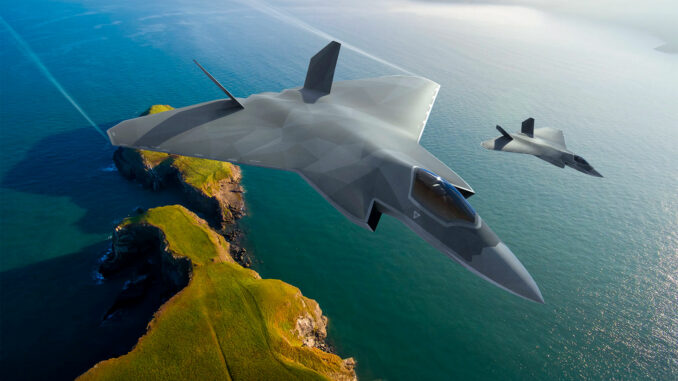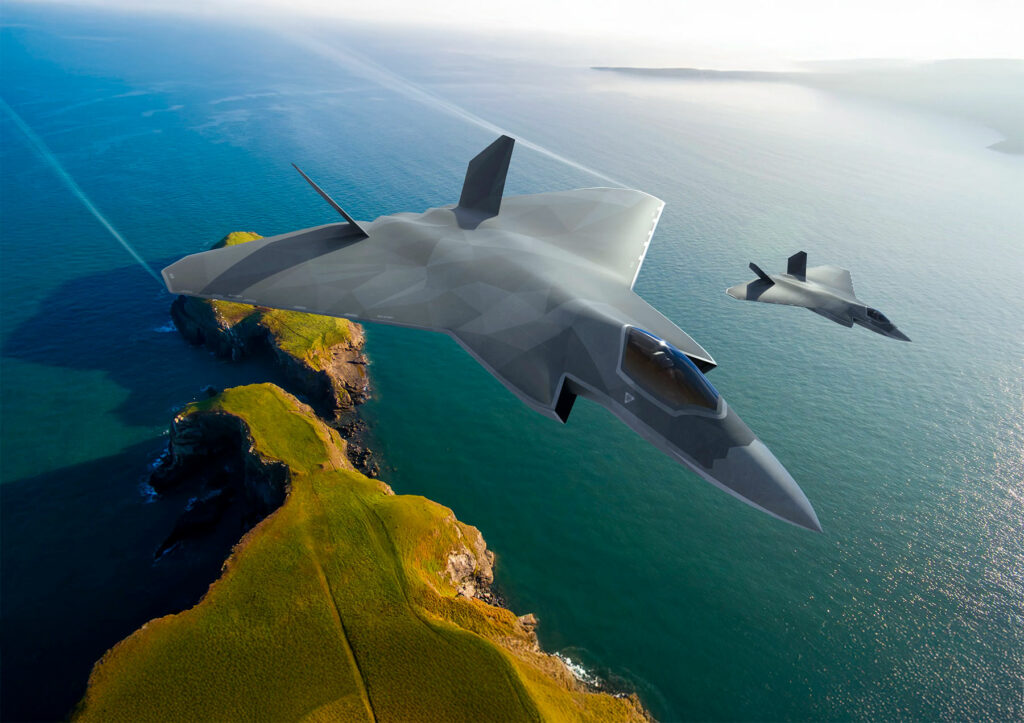
Technical and economic analysis of the challenges and opportunities of equipping the Tempest stealth fighter with long-range missiles.
The Tempest project, developed by the UK, Italy and Japan, aims to equip the future stealth fighter with air-to-air missiles of greater range and capacity. These weapons, superior to those currently in service, respond to the rapid advances made by China and other major players in the field of military technology. The Meteor missile, though effective, could be surpassed by 2040. Stealth and system integration requirements increase costs and technical challenges, but are crucial to maintaining military superiority.
The Tempest program
The Tempest program embodies the trilateral ambition of the UK, Italy and Japan to develop a next-generation stealth fighter. The project, valued at around 12 billion euros, aims to enter service in 2035. Planned features include advanced stealth, real-time data fusion and the ability to integrate long-range air-to-air missiles.
The main challenge is to maintain a technological lead in the face of the rapid development of long-range missiles in China and Russia. Indeed, weapons such as the Chinese PL-15, with an estimated range of 150 to 200 km, pose a direct challenge to NATO’s current capabilities.
Long-range missiles: a response to emerging threats
Long-range missiles currently available in partner countries include the European Meteor and the American AMRAAM. The Meteor, capable of reaching a target at 130 miles (approx. 209 km), is powered by a ramjet engine, giving it superior maneuverability at long range.
However, the Meteor’s performance is likely to be insufficient by 2040. China has developed the PL-15E, a compressed version for the internal compartments of J-20 fighters. These missiles have an extended range and greater resistance to jamming.
The Tempest will need to integrate missiles of comparable or even greater range. This may require larger dimensions, optimized fuel or a multi-pulse electro-chemical propulsion engine.

Stealth and data fusion
Stealth is essential in the Tempest’s design, reducing the radar signature to evade advanced detection systems. Composite materials and construction techniques will absorb electromagnetic waves while maximizing mission effectiveness.
Another key point is data fusion. The Tempest will be able to collect and process information from multiple sources, such as drones, satellites and other fighters. This data will be analyzed in real time to enhance the pilot’s situational awareness.
This capability requires advanced electronic systems, with an estimated cost of 3 billion euros, or around 25% of the total program budget.
Economic and strategic implications
The Tempest program represents a major stimulus for the aeronautics industry in Europe and Japan. Over 21,000 jobs are expected to be created in the UK, with an annual economic impact of €2.3 billion.
On a strategic level, this trilateral collaboration strengthens military and technological alliances. The Tempest could become a direct competitor to American (NGAD) and Chinese projects, while reducing dependence on American equipment.
However, the total cost could exceed initial forecasts, increasing budgetary tensions. Technological choices will have to be rigorous to ensure optimum profitability.
Technological limits and risks
Despite its potential, the Tempest will have to overcome a number of technical obstacles. The development of effective long-range missiles in limited internal compartments could lengthen lead times.
In addition, the rapid emergence of adversary technologies, such as artificial intelligence applied to detection, could compromise stealth advantages. Continuous updating of systems will be essential to avoid premature obsolescence.
War Wings Daily is an independant magazine.